When it comes to seafood, shrimp often takes center stage due to its delectable taste and versatility in various cuisines. However, there is a lingering question among many individuals: Is shrimp meat? In this article, we will delve into this intriguing topic and explore the nutritional aspects, health benefits, cooking methods, and more related to shrimp. So let’s dive right in and uncover the truth about shrimp.
What is shrimp?
Shrimp is a type of crustacean that belongs to the decapod order. It is characterized by its elongated body, thin legs, and a distinctive curved shape. Shrimp come in various species, sizes, and colors, ranging from small to jumbo, and they inhabit both freshwater and saltwater environments.
They are highly valued for their tender flesh and mild, slightly sweet flavor, which makes them a popular ingredient in numerous culinary preparations.
Where is shrimp from?
Shrimp is sourced from various locations worldwide, including coastal pond farming in countries like China, India, Thailand, and Indonesia. These countries are known for their significant shrimp production and export.
However, shrimp can also be found in other regions, such as the United States, Mexico, Ecuador, Vietnam, and Bangladesh, among others. The specific origin of shrimp can vary depending on the supplier and the type of shrimp being sourced.
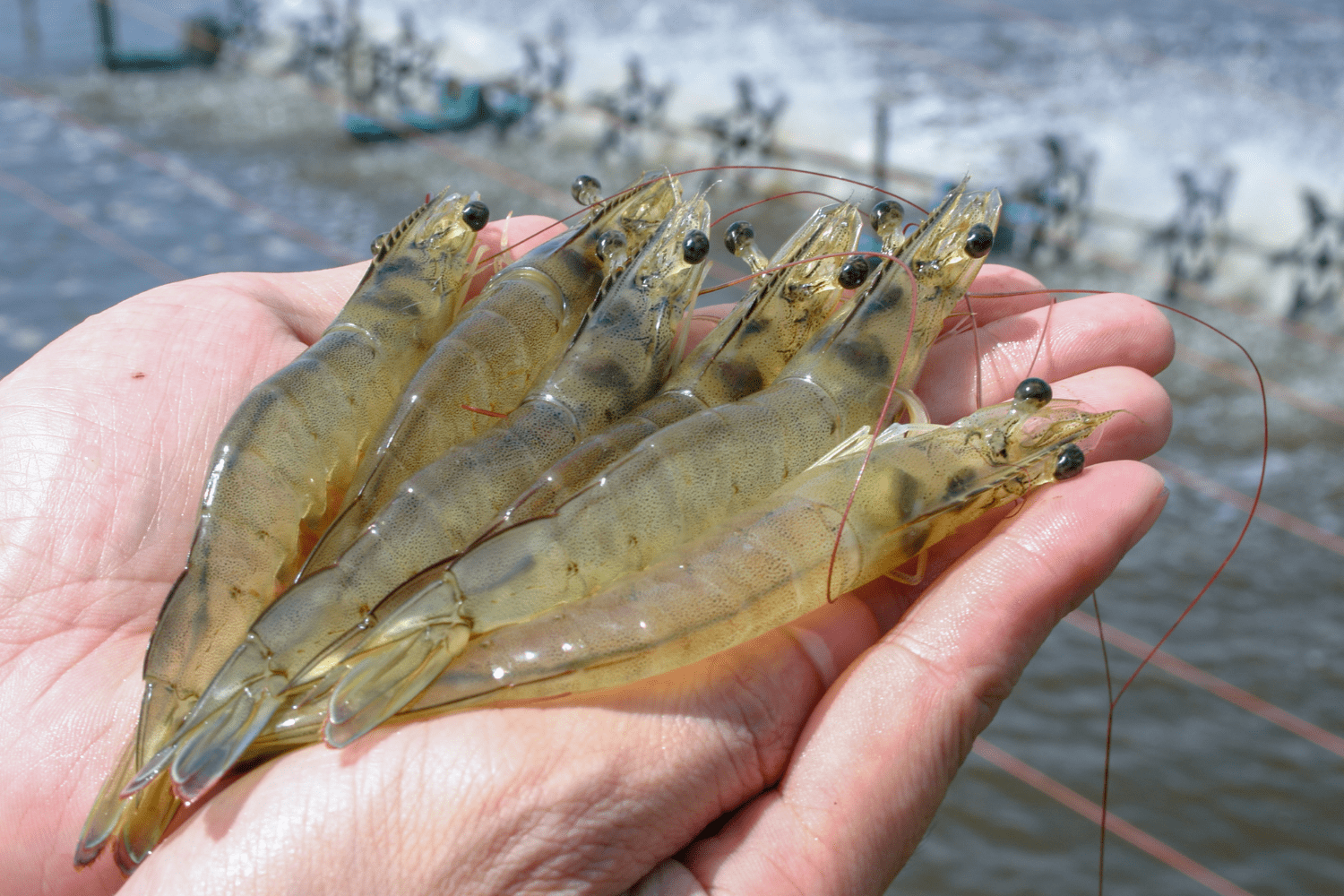
How many species of shrimp?
There are thousands of known species of shrimp, with new species being discovered and identified regularly. It is estimated that there are over 2,000 recognized species of shrimp worldwide.
These species vary in size, color, habitat, and behavior. They can be found in diverse aquatic environments, including freshwater, saltwater, and brackish water.
Some common species of shrimp include the Pacific white shrimp, tiger shrimp, pink shrimp, brown shrimp, and rock shrimp. Each species has its own unique characteristics and ecological niche.
Is shrimp considered meat?
While shrimp is undoubtedly an aquatic animal, the classification of whether it falls under the category of “meat” is subject to interpretation.
From a biological perspective, shrimp is considered seafood rather than traditional meat derived from land animals like beef, poultry, or pork.
So why is shrimp not meat?
The reason shrimp is not traditionally classified as meat is primarily due to its aquatic nature and different anatomical structure compared to land animals. In culinary terms, “meat” typically refers to the flesh of mammals and birds.
Seafood, including shrimp, is usually categorized separately, considering factors such as taste, texture, and cultural culinary traditions. However, it’s important to note that the perception of shrimp can vary among individuals and regions.
However, from a culinary standpoint, shrimp is often grouped with other forms of meat due to its protein-rich composition and its usage in dishes that typically include meat.
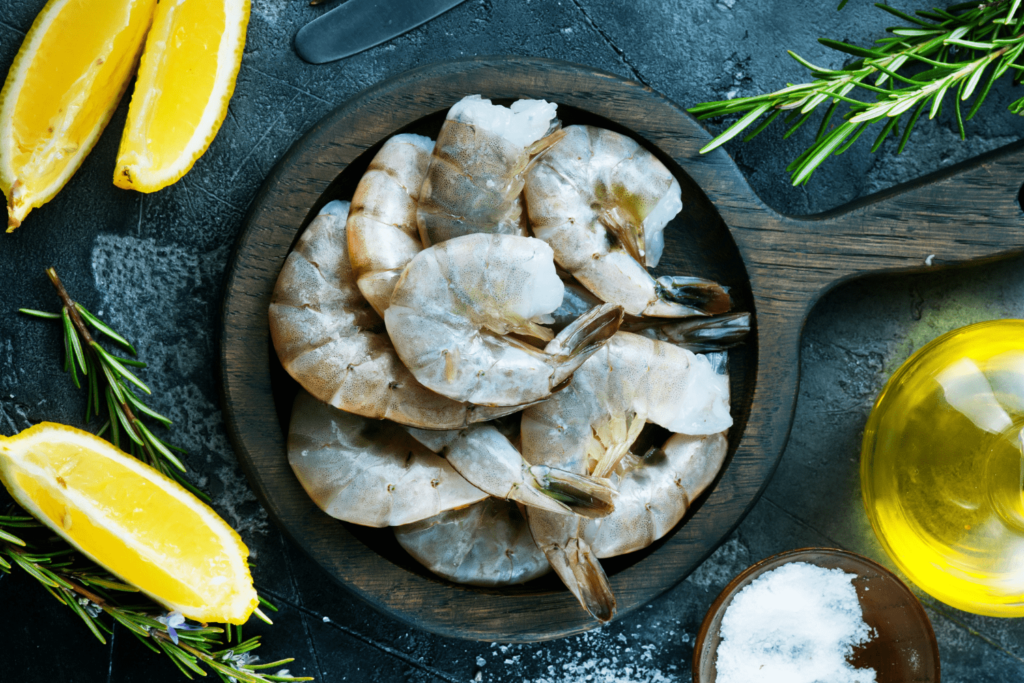
Is shrimp fish?
No, shrimp is not a fish. Shrimp belongs to a group of small, swimming crustaceans. They are part of the crustacean family and are classified as decapods, which means they have ten legs. Fish, on the other hand, are vertebrates that live in water and breathe through gills. They are separate organisms from shrimp and belong to a different biological category.
Are shrimp and prawns the same?
Shrimp and prawns are often used interchangeably in culinary contexts, but there are some anatomical differences between the two. While they share similar culinary uses and taste, there are distinctions to consider.
- Prawns are generally larger in size and have a less pronounced bend to their bodies compared to shrimp. Shrimp have lamellar or plate-like gills, whereas prawns have branching gills. Another difference is that shrimp have claws on two pairs of legs, while prawns have claws on three pairs.
- In terms of body structure, prawns have segmented bodies with overlapping segments, whereas shrimp only have the first and third segments overlapping.
- Both shrimp and prawns exhibit a range of colors, including brownish, pinkish, bluish, or gray. When cooked, both can take on a reddish coral color.
- From a culinary standpoint, shrimp and prawns have a similar taste, with prawns being slightly sweeter. Prawns are often priced slightly higher than shrimp. However, they can generally be substituted for one another in recipes.
So, while shrimp and prawns are not exactly the same, they share many similarities and can be used interchangeably in cooking, depending on personal preference and availability.
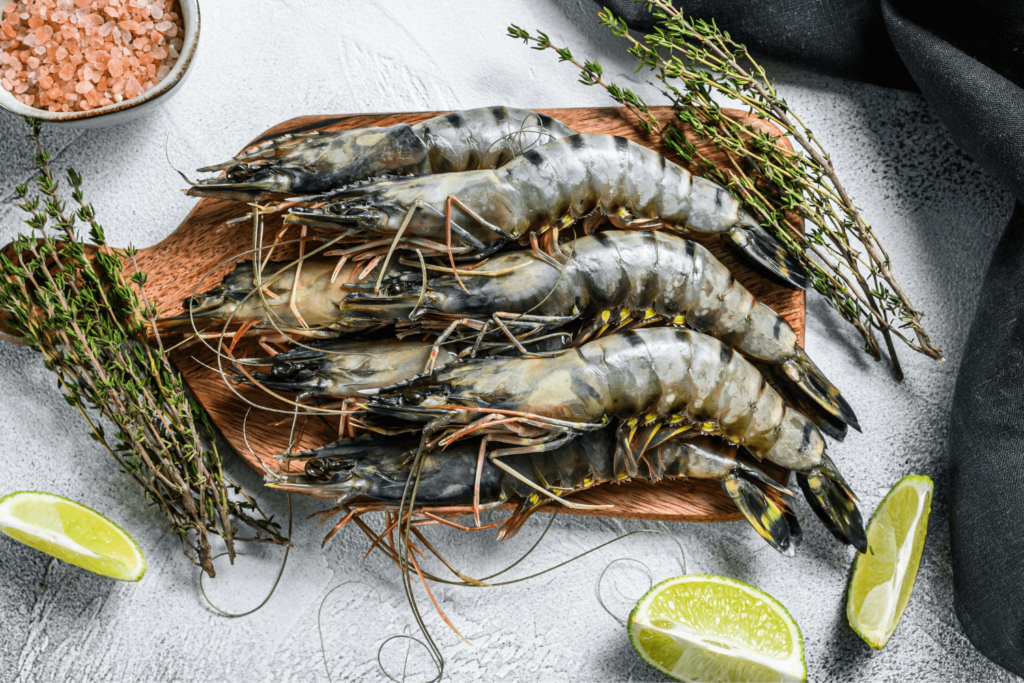
Is shrimp meat healthy?
Shrimp offers numerous health benefits due to its nutrient-rich composition.
- Firstly, it is an excellent source of high-quality protein, which is essential for muscle repair, growth, and overall tissue health.
- Additionally, shrimp contains omega-3 fatty acids, known for their heart-healthy properties, which may help reduce the risk of cardiovascular diseases.
- Moreover, the mineral content in shrimp, including selenium and zinc, contributes to antioxidant defense and immune system function. These minerals play a vital role in neutralizing harmful free radicals and supporting optimal cellular health.
Is shrimp healthier than chicken?
It’s important to consider shrimp and chicken’s macronutrient content, vitamins, and minerals. Shrimp is an excellent source of lean protein and is low in saturated fat, making it a favorable choice for those seeking a healthier alternative to traditional meat options. On the other hand, chicken is also a good source of protein but contains slightly more fat, particularly in the skin.
In terms of micronutrients, shrimp provides essential minerals like selenium, zinc, and copper, along with vitamins such as vitamin B12 and vitamin D. Chicken, on the other hand, contains higher levels of vitamins B3 and B6.
Ultimately, both shrimp and chicken can be part of a well-balanced diet, and the choice between the two depends on individual dietary preferences and health goals.
Is shrimp or chicken better for weight loss?
Shrimp can be a beneficial option for weight loss due to its low calorie and fat content, high protein content, and ability to promote feelings of fullness. However, incorporating both shrimp and chicken into a balanced diet can provide a variety of nutrients and support weight management efforts.
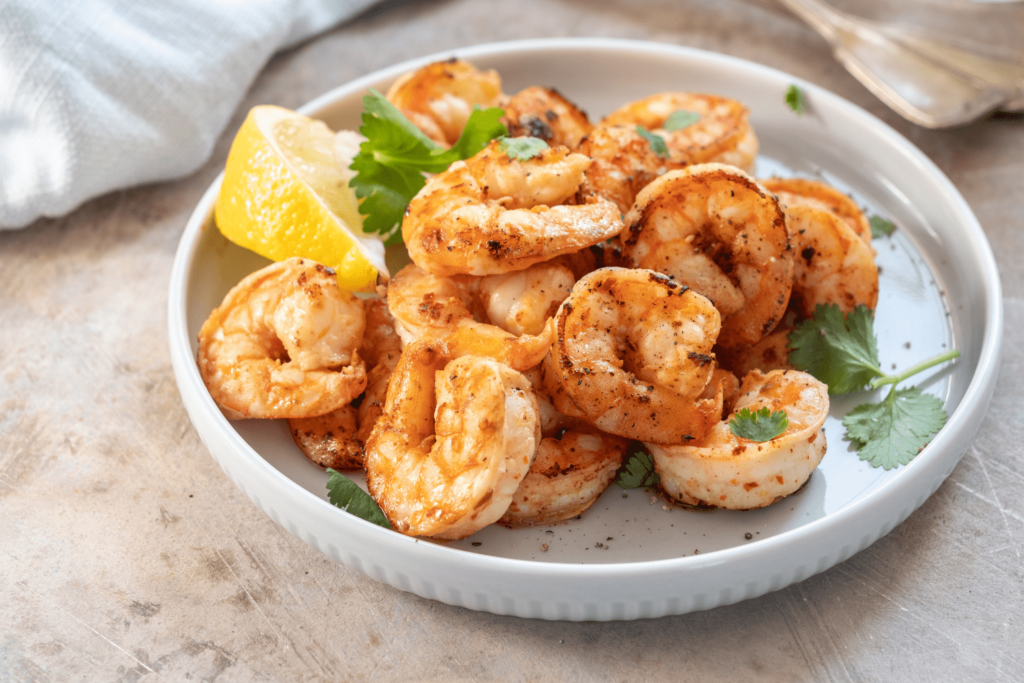
When is shrimp in season?
The availability and seasonality of shrimp can vary depending on the species and location. However, in general, shrimp are available year-round due to aquaculture practices that allow for consistent production.
Regarding specific seasonal variations, it depends on the region and the type of shrimp. The spring/brown shrimp season typically occurs from May to July. During this time, brown shrimp are more abundant and harvested.
The fall/white shrimp season usually begins in mid-August and continues until mid-December, with some areas extending into January. This period marks the peak season for white shrimp, which are harvested during this time.
Cooking shrimp
How to devein shrimp?
- Start by rinsing the shrimp under cold water to remove any dirt or debris. Pat them dry with a paper towel.
- Lay the shrimp on a clean cutting board and locate the dark vein that runs along the back of the shrimp. This vein is the digestive tract.
- Take a small, sharp knife or kitchen shears and make a shallow cut along the length of the back of the shrimp, just deep enough to expose the vein.
- Once the vein is exposed, you have two options. You can either remove the vein completely or simply make a shallow cut and rinse it out. To remove the vein completely, use the tip of the knife or your fingers to lift the vein out. Pull it gently and discard it. Alternatively, if you prefer to rinse out the vein, hold the shrimp under running water and use your fingers or a gentle stream of water to flush out the vein.
- After deveining, rinse the shrimp once again to ensure that any residue is removed.
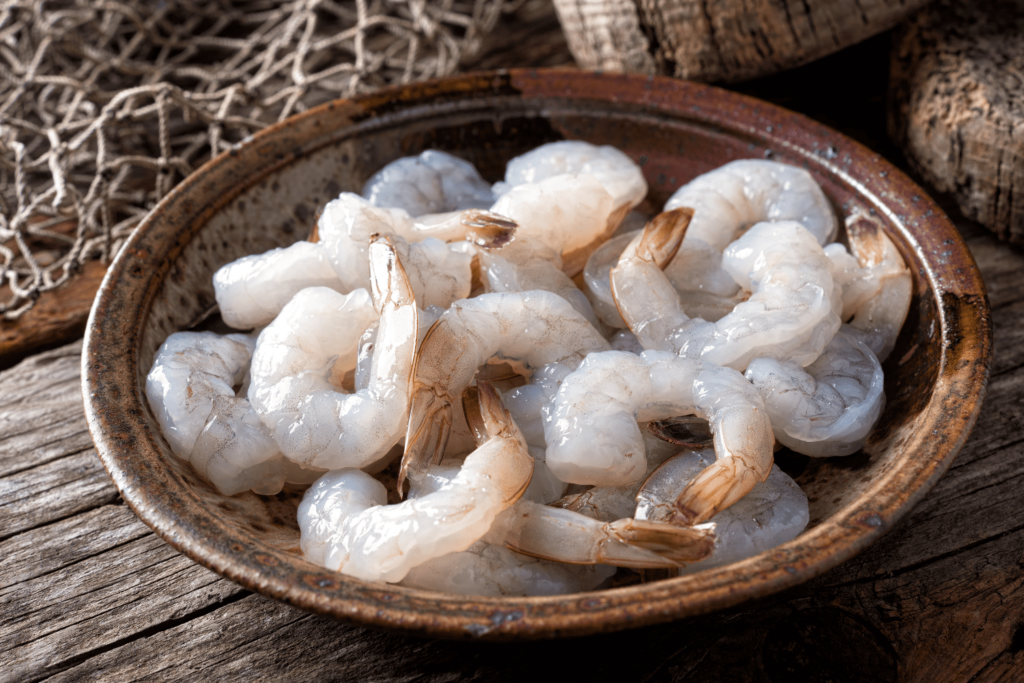
How long boil shrimp meat? When is shrimp done?
To prepare boiled shrimp, start by bringing a pot of water to a rolling boil. Add seasonings of your choice, such as salt, herbs, or spices, to infuse flavor into the shrimp.
Then, carefully add the shrimp to the boiling water and cook for approximately 2-3 minutes until they turn pink and opaque.
Once cooked, remove the shrimp from the water and transfer them to a bowl of ice water to halt the cooking process and preserve their texture.
Overcooked shrimp can become tough and rubbery, while undercooked shrimp may pose a risk of bacterial contamination.
When is shrimp bad? How long is shrimp meat good?
Like other seafood, the freshness and shelf life of shrimp depends on proper storage and handling. Fresh shrimp should have a mild ocean scent and firm, translucent flesh.
When refrigerated at temperatures below 40°F (4°C), raw shrimp can maintain quality for up to two days.
Cooked shrimp, when stored in an airtight container in the refrigerator, can typically be consumed within three to four days.
How often is it safe to eat shrimp?
Shrimp can be a healthy addition to a balanced diet due to its nutritional benefits. However, it is generally recommended to consume shrimp or other seafood in moderation. The American Heart Association suggests eating seafood, including shrimp, at least twice a week as part of a heart-healthy diet.
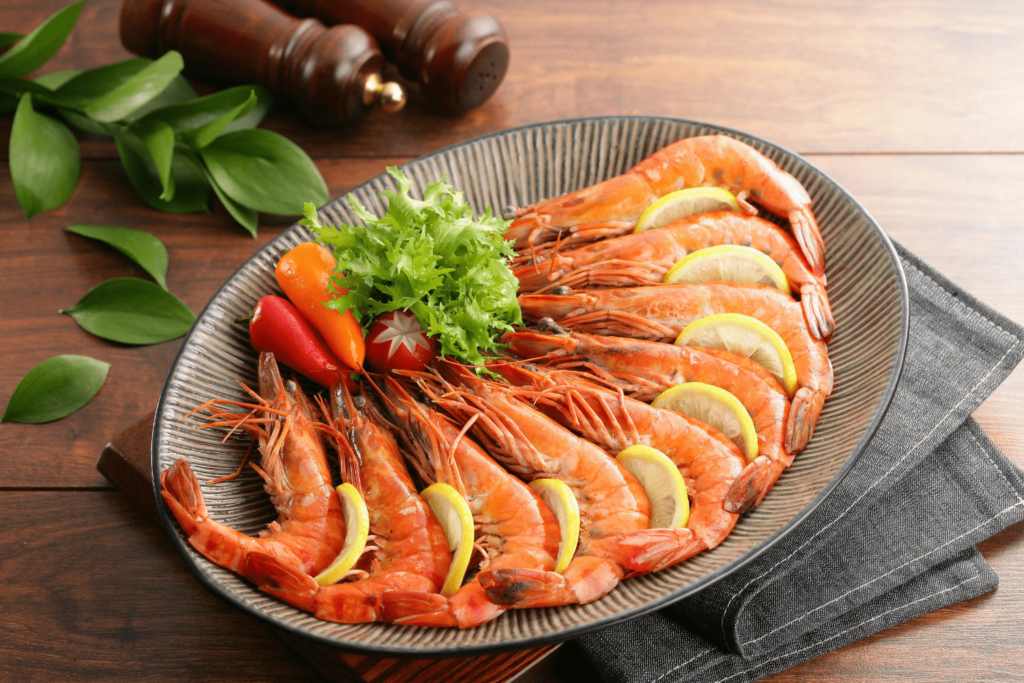
How much is shrimp a pound?
The pricing of shrimp can vary based on factors such as species, size, quality, and geographical location. Larger-sized shrimp often command a higher price due to their desirability and demand. According to The Pricer, shrimp can range anywhere from $6 to $25 per pound.
Additionally, the variety of shrimp available in the market can range from common species like white shrimp and tiger shrimp to more unique options such as rock shrimp or royal red shrimp.
FAQs
Can shrimp meat be considered lean meat?
Yes, shrimp meat is generally considered lean meat. It is low in fat and contains virtually no carbohydrates. This makes shrimp a popular choice for those seeking a lean source of protein in their diet.
Can you eat raw shrimp?
Consuming raw shrimp poses a risk of parasitic infection or foodborne illness. It is generally recommended to avoid eating raw shrimp, especially if it has not been properly frozen beforehand. Freezing shrimp at temperatures below -4°F (-20°C) for a specific duration can help kill harmful parasites that may be present.
However, it’s important to note that even with freezing, there is still a potential risk associated with consuming raw shrimp. Therefore, it is generally safer to cook shrimp thoroughly to ensure any potential pathogens are eliminated.
Can you eat the shell of a shrimp?
Yes, you can eat the shell of a shrimp, but it is generally not recommended as it can be tough and difficult to digest. Most people prefer to remove the shell before eating the shrimp.
Can vegetarians eat shrimp?
No, vegans/ vegetarians do not eat shrimp or any other animal products. Veganism is a lifestyle and dietary choice that avoids the consumption of all animal-derived foods, including meat, poultry, fish, seafood, dairy products, eggs, honey, and other animal by-products.
What are some popular shrimp recipes or dishes?
- Shrimp Chow Fun: This is a Cantonese dish consisting of stir-fried flat rice noodles with shrimp, vegetables, and soy sauce.
- Shrimp Mei Fun: Mei Fun, also known as rice vermicelli, is often stir-fried with shrimp, bean sprouts, and various vegetables in a flavorful sauce.
- Shrimp Pad Thai: A popular Thai dish, Pad Thai combines stir-fried rice noodles with shrimp, eggs, tofu, bean sprouts, and a tangy sauce made from tamarind paste, fish sauce, and other ingredients.
- Vietnamese Shrimp Toast: This is a crispy appetizer where shrimp paste is spread onto bread slices, coated in sesame seeds, and deep-fried until golden brown.
- Tempura Shrimp: Originating from Japan, tempura shrimp is made by coating shrimp in a light batter and deep-frying them until crispy. It is often served with a dipping sauce like tentsuyu.
Is it safe to eat shrimp during pregnancy?
Yes, it is generally safe to eat shrimp during pregnancy. Shrimp is a low-mercury seafood option and can be consumed in moderation as part of a balanced diet. However, it is important to ensure that the shrimp is properly cooked to avoid any risk of foodborne illnesses. Pregnant women should consult with their healthcare provider for personalized advice on their diet during pregnancy, including the consumption of seafood.
What is the average size of a shrimp?
The average size of a shrimp can vary depending on the species. In general, shrimp range in size from very small (less than an inch) to larger varieties that can grow up to 6 inches or more. The most commonly consumed shrimp species, such as the white shrimp or brown shrimp, typically range in size from 2 to 4 inches in length. It’s important to note that shrimp size classifications can differ between regions and markets, so specific sizes may vary.
Conclusion
Is shrimp meat? This seemingly simple question has sparked debates among culinary enthusiasts, health-conscious individuals, and religious followers around the world. The classification of shrimp as either meat or seafood has become a topic of interest due to its unique characteristics and the diverse perspectives surrounding it.
While some argue that shrimp should be considered meat due to its animal origin, others contend that its classification as seafood is more fitting. Ultimately, the answer to this question may vary depending on cultural, dietary, and personal beliefs.
Regardless of where one stands on the matter, it is clear that the discussion surrounding whether shrimp is classified as meat or seafood continues to tantalize taste buds and ignite passionate conversations about food and its various classifications.
Warning: Shrimp is generally safe to consume, but it’s essential to be mindful of potential allergenic reactions, especially for individuals with shellfish allergies. Additionally, due to its relatively high cholesterol content, moderation is key for those with underlying cardiovascular conditions.